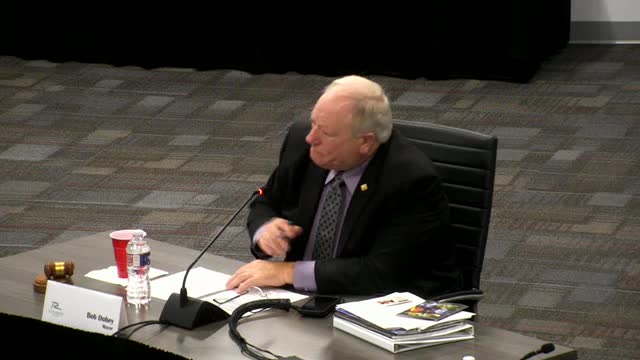Richardson advances design for three US 75 pedestrian/bicycle crossings; Belt Line project seeks federal funds
January 27, 2025 | Richardson, Dallas County, Texas
This article was created by AI summarizing key points discussed. AI makes mistakes, so for full details and context, please refer to the video of the full meeting. Please report any errors so we can fix them. Report an error »

Richardson — City staff briefed the council on three planned bicycle and pedestrian crossing projects over US 75—Collins, Arapahoe and Belt Line—and recommended pursuing a federal Transportation Alternatives funding application for the Belt Line crossing.
Daniel Herrick, presenting for the city, said the three crossings were identified in earlier bond planning and the city’s active transportation plan as projects that would improve east–west connectivity across US 75. Collins and Arapahoe are advancing in design, Herrick said, with Collins targeting construction in 2026 and Arapahoe’s traffic-signal work led by TxDOT expected to move to construction this year.
The Belt Line crossing poses greater constraints because underpass geometry limits sidewalk width and separation from traffic. Herrick said the most complete solution would require moving a sloped abutment wall and shifting a u-turn lane; the city estimates that structural modification at Belt Line would cost about $4.4 million and that TxDOT’s grant program has a minimum project size (approximately $6.25 million) for application. Herrick said the project would require additional local match and estimated the city’s extra share at roughly $1 million if federal funds are awarded.
Council members supported pursuing grant funding but sought alternative designs if the application is unsuccessful. Councilmember Justice asked whether a smaller project could still improve walkability; Herrick said city staff had identified lower-cost phasing and smaller improvements—such as improved lighting, ADA-compliant ramps and crosswalk replacements—that would still advance connectivity but would not deliver the wider, physically separated trail designers prefer.
Why this matters: the three crossings connect neighborhoods, transit stops and civic facilities across an interstate-grade barrier; the design choices affect pedestrian safety, ADA compliance and the city’s ability to deliver visible place-making elements in the core district.
Next steps: staff will submit a Transportation Alternatives grant application in February for the Belt Line work, continue design on Collins and Arapahoe and return to council in October with funding results and recommended next steps.
Daniel Herrick, presenting for the city, said the three crossings were identified in earlier bond planning and the city’s active transportation plan as projects that would improve east–west connectivity across US 75. Collins and Arapahoe are advancing in design, Herrick said, with Collins targeting construction in 2026 and Arapahoe’s traffic-signal work led by TxDOT expected to move to construction this year.
The Belt Line crossing poses greater constraints because underpass geometry limits sidewalk width and separation from traffic. Herrick said the most complete solution would require moving a sloped abutment wall and shifting a u-turn lane; the city estimates that structural modification at Belt Line would cost about $4.4 million and that TxDOT’s grant program has a minimum project size (approximately $6.25 million) for application. Herrick said the project would require additional local match and estimated the city’s extra share at roughly $1 million if federal funds are awarded.
Council members supported pursuing grant funding but sought alternative designs if the application is unsuccessful. Councilmember Justice asked whether a smaller project could still improve walkability; Herrick said city staff had identified lower-cost phasing and smaller improvements—such as improved lighting, ADA-compliant ramps and crosswalk replacements—that would still advance connectivity but would not deliver the wider, physically separated trail designers prefer.
Why this matters: the three crossings connect neighborhoods, transit stops and civic facilities across an interstate-grade barrier; the design choices affect pedestrian safety, ADA compliance and the city’s ability to deliver visible place-making elements in the core district.
Next steps: staff will submit a Transportation Alternatives grant application in February for the Belt Line work, continue design on Collins and Arapahoe and return to council in October with funding results and recommended next steps.
View full meeting
This article is based on a recent meeting—watch the full video and explore the complete transcript for deeper insights into the discussion.
View full meeting
